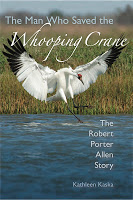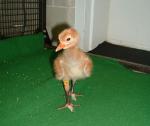Today I thought I’d give you some updates on our favorite bird. (My whooping crane series, which began on April 20, about their current battles for survival, is still stalled due to computer issues on the site on which I was scheduled to post. As soon as part two surfaces, I’ll let you know.) In the meantime, here’s what happening around the country.
*In 2010, whooping cranes were reintroduced to White Lake, Louisiana. These young cranes, who were never taught to migrate, were labeled the Louisiana “nonmigratory” flock.” Last week two of these banded cranes showed up at Wynn Joyce Park on Lake Ray Hubbard near Dallas. They’ve been there for several days and show no signs of leaving. Why did they leave their home in Louisiana? Who knows. Why did they choose Lake Hubbard? Who know. You can check up on these wayward
cranes on Dallas Audubon: BirdChat.
*The Wood Buffalo/Aransas flock, the original wild flock, which has been migrating from the Northwest Territories to the Texas Coast for thousands of years, is now spreading out from their Texas coastal refuge. A few families have claimed territories near the refuge, but at least seven birds have moved inland to Granger Lake near Austin. Seems when they fly south from Canada, they pull up short and settle about 200 miles from Aransas. Go figure.
 |
| Released in Sept. 2012 |
*The Operation Migration Class of 2013 is cooking! Eggs in incubation at Patuxent Wildlife Research Center will hatch any day now. For current development, go to Operation Migration.
*The Eastern Flock of whoopers, which were taught to migrate from Wisconsin to Florida by the Operation Migration crew are nesting at Necedah National Wildlife Refuge. Currently, there are twenty nests and possibly more to come very soon. Also nesting at the same time are the black flies, which plague the whoopers, often causing them to abandon their nests. Black fly traps have been set up and fingers are crossed in hopes that these young whoopers will not be molested by the pesky insects while they incubate their eggs. These are the nesting pairs (data take from OM’s site). Thought you might like to see one the ten year old cranes when it was still a chick. For more “ahhhhh” photos go to OM’s “In the Field page.”
*And finally, a big congratulations to crane guru, Dr. George Archibald, cofounder of the International Crane Foundation. He’s just received the inaugural Dan W. Lufkin Prize for Environmental Leadership.
 |
|
| Hatched in 2003 |
| Female | Male |
| 13-03 | 9-05 |
| 15-09 | 11-09 |
| 16-07 | 16-02 |
| 18-02 | 13-02 |
| 19-04 | 12-02 |
| 7-09 | 17-03 |
| 8-09 | 2-04 |
| 9-03 | 3-04 |
| 24-08 | 14-08 |
| 26-07 | 11-02 |
| 26-09 | 27-06 |
| 35-09 | 6-09 |
| 36-09 | 18-03 |
| 42-09 | 24-09 |
| 4-09 | 16-04 |
| 5-09 | 33-07 |
| 5-10 | 28-08 |
| 22-07 | 12-05 |
| W1-06 | 10-03 |
| 32-09 | 41-09 |

